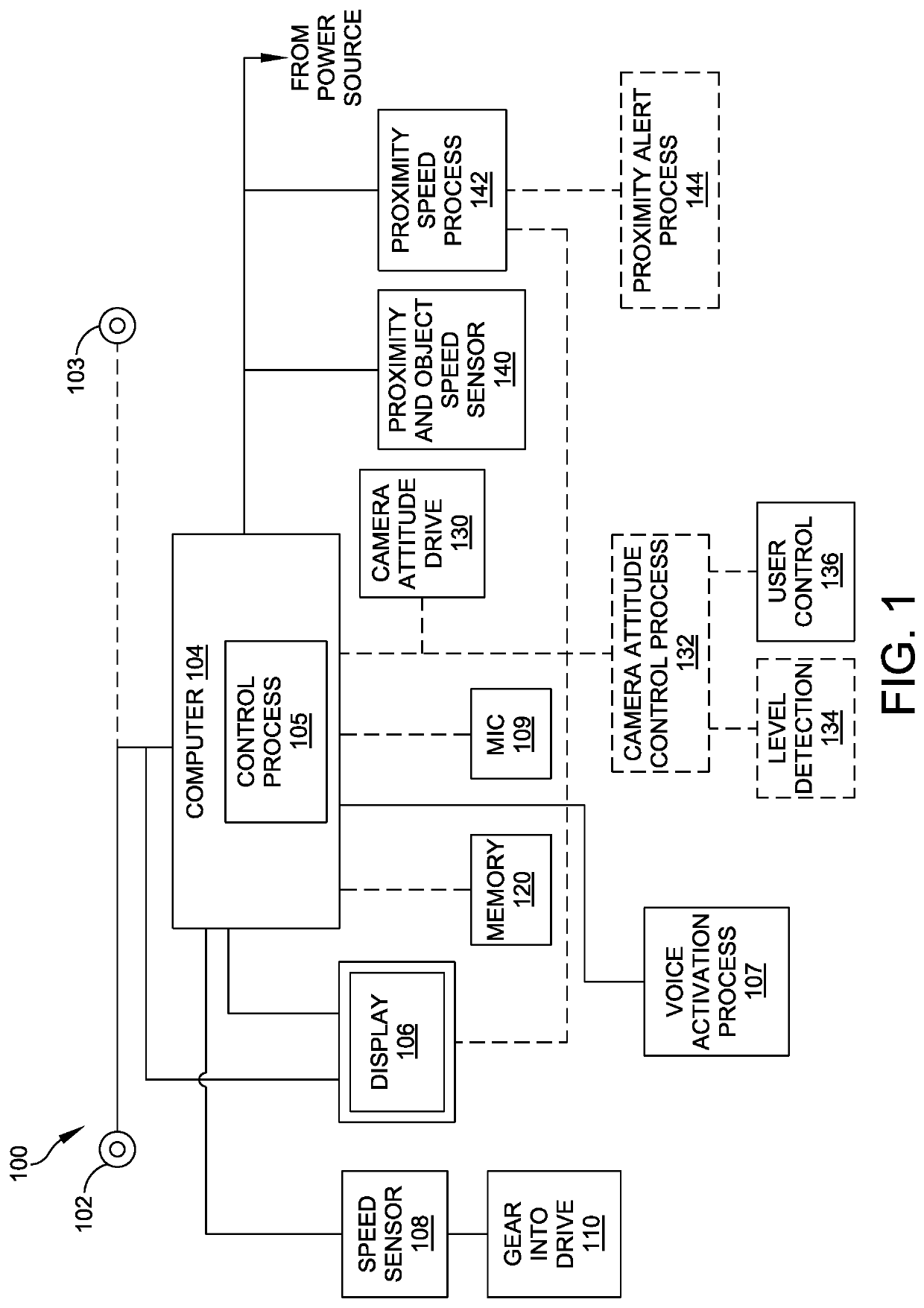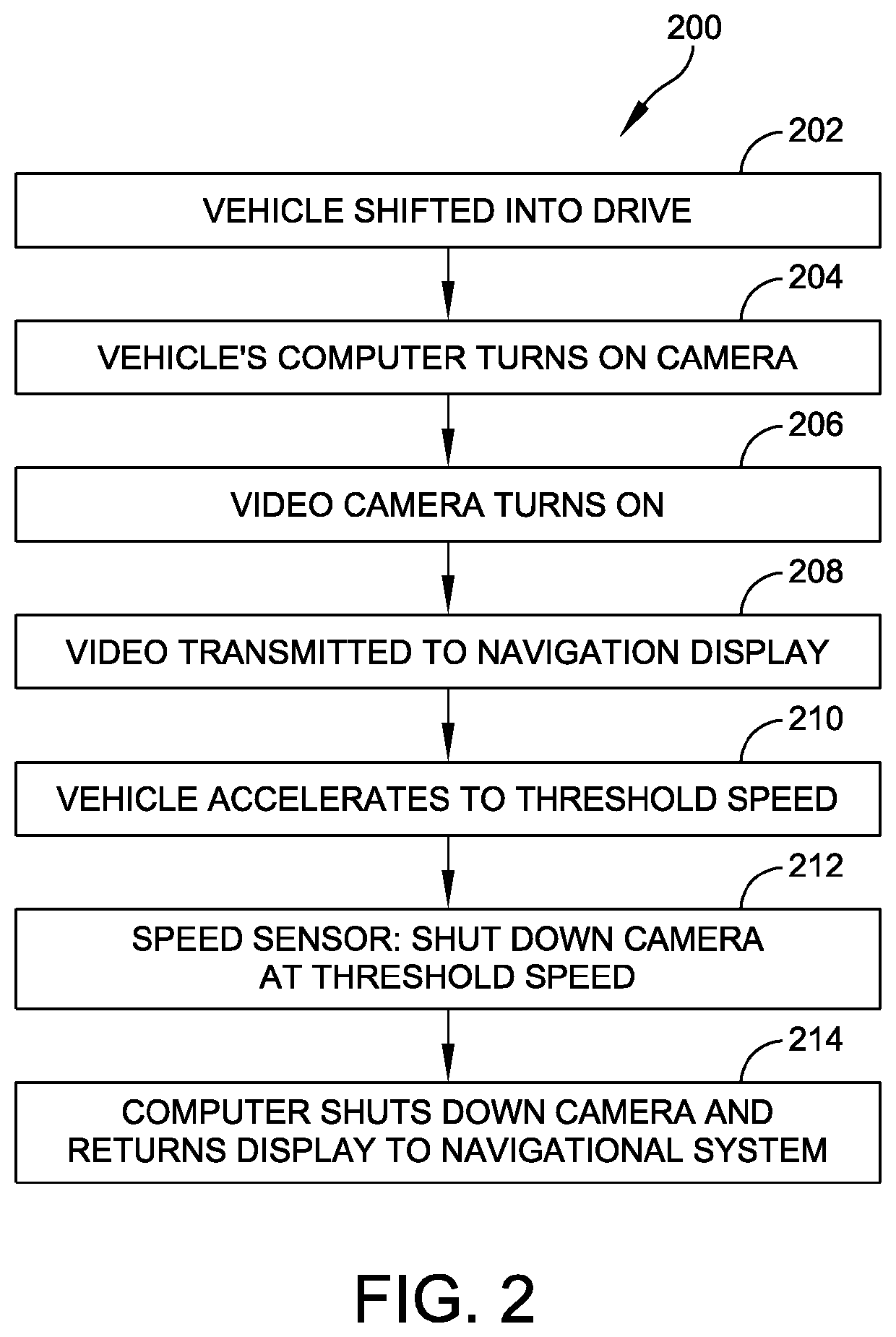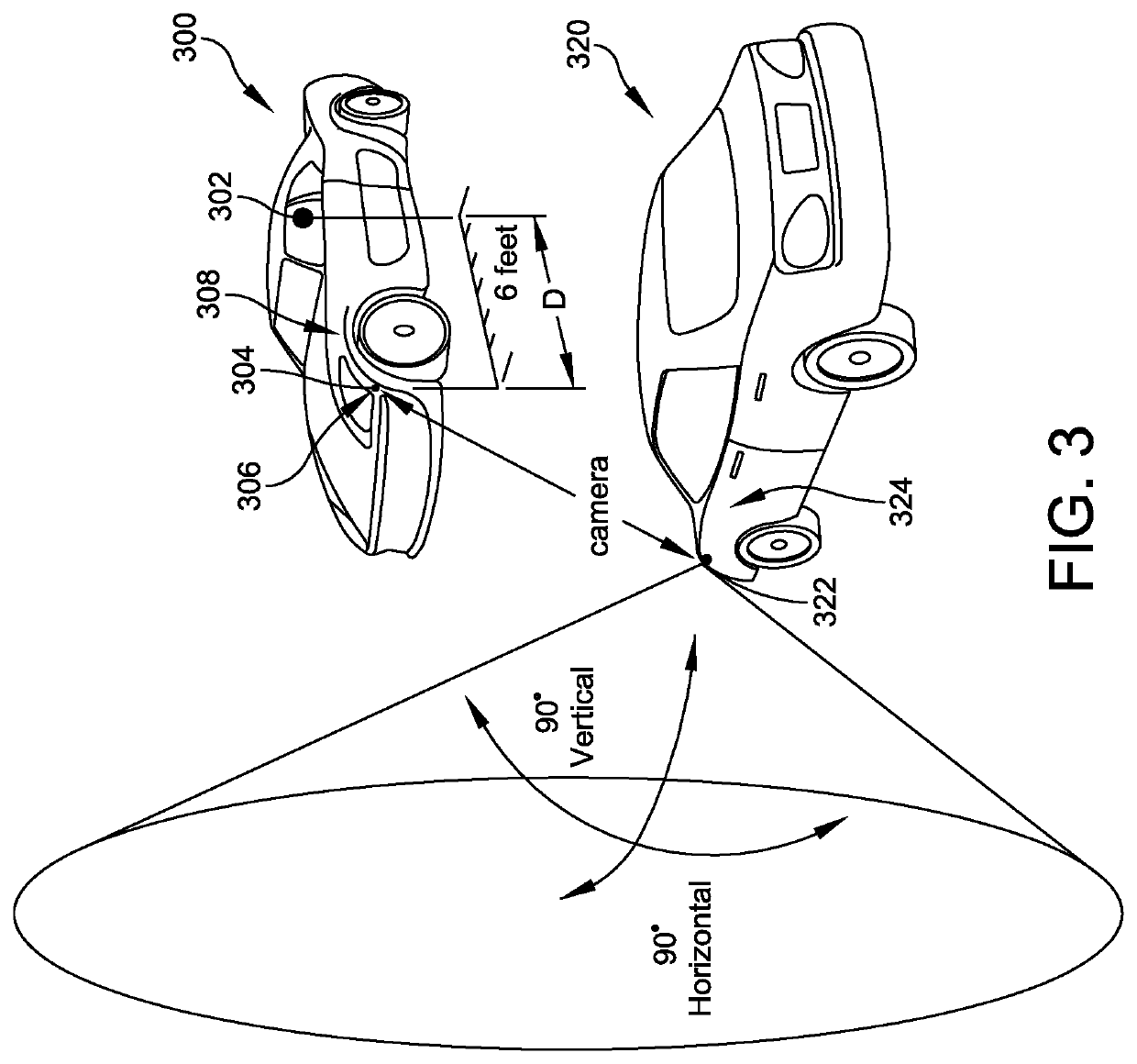System and method for providing front-oriented visual information to vehicle driver
a technology for providing front-oriented visual information and vehicle drivers, which is applied in the field of visual displays, can solve the problems of reducing the safety of drivers, so as to minimize the risk, avoid the possibility of camera damage and/or a restricted field of view, and improve safety.
- Summary
- Abstract
- Description
- Claims
- Application Information
AI Technical Summary
Benefits of technology
Problems solved by technology
Method used
Image
Examples
Embodiment Construction
[0031]When a motor vehicle driver is situated so as to be perpendicular to the flow of traffic and pulling out of a side street, building, garage or parking spot, there is a danger to that driver and other operators. In order to see traffic in the oncoming lane, the driver has to pull far enough forward to visually observe the near lane of traffic. Other vehicles and objects placed along a roadway and other obstructions can prevent a clear view and necessitate a driver pulling forward into the near lane. Given that most vehicles have a front end that includes a motor or a storage compartment with a length of about 2-4 feet and that a driver typically sits another 2 feet or more from the dashboard, the driver may move the car until there is a protrusion of 4-6 feet or more, in order for the driver to view the lane and determine whether to proceed or wait. During the movement to the protruded position, the front end of the car is vulnerable to being struck by other vehicles that are u...
PUM
 Login to View More
Login to View More Abstract
Description
Claims
Application Information
 Login to View More
Login to View More - R&D
- Intellectual Property
- Life Sciences
- Materials
- Tech Scout
- Unparalleled Data Quality
- Higher Quality Content
- 60% Fewer Hallucinations
Browse by: Latest US Patents, China's latest patents, Technical Efficacy Thesaurus, Application Domain, Technology Topic, Popular Technical Reports.
© 2025 PatSnap. All rights reserved.Legal|Privacy policy|Modern Slavery Act Transparency Statement|Sitemap|About US| Contact US: help@patsnap.com



